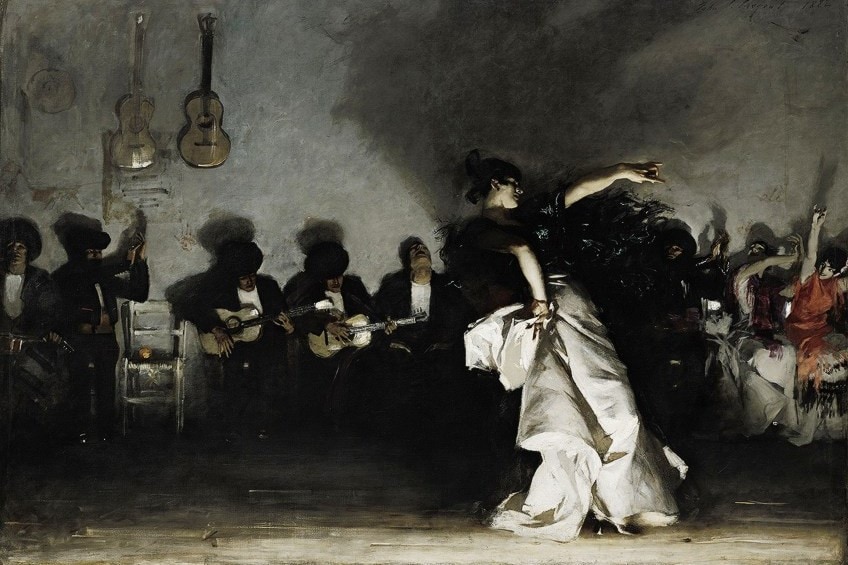Movement in Art – Discover Instances of Visual Movement in Art
What is movement in art? The simple movement in art definition would be that the sense of movement is defined as one of the basic principles of art. In this article, we will examine the various methods to achieve the sensation of dynamic flow as well as touch on some examples of movement in art.
Contents
- 1 What Is Movement in Art?
- 2 Seven Ways to Add Visual Movement in Art
- 2.1 Using Rhythm to Create Visual Movement in Art
- 2.2 Using Lines to Create Movement in Art
- 2.3 Using Color to Create Movement
- 2.4 How to Create Implied Visual Movement in Art
- 2.5 Using Illusion to Create Visual Movement in Art
- 2.6 Using Suggestive Brushwork to Create Movement
- 2.7 Using Scumbling to Create Motion in Art
- 3 Frequently Asked Questions
What Is Movement in Art?
Perceptual movement is an artistic element that is utilized to give the illusion of activity in a piece of art. This movement can refer to a particular component of a piece or the entire composition. The other aspects and principles of art that are reliant on perceptual movement are line, rhythm, color, balance, and space.
These are all instances of artistic elements and concepts that may help to produce movement in an artwork.
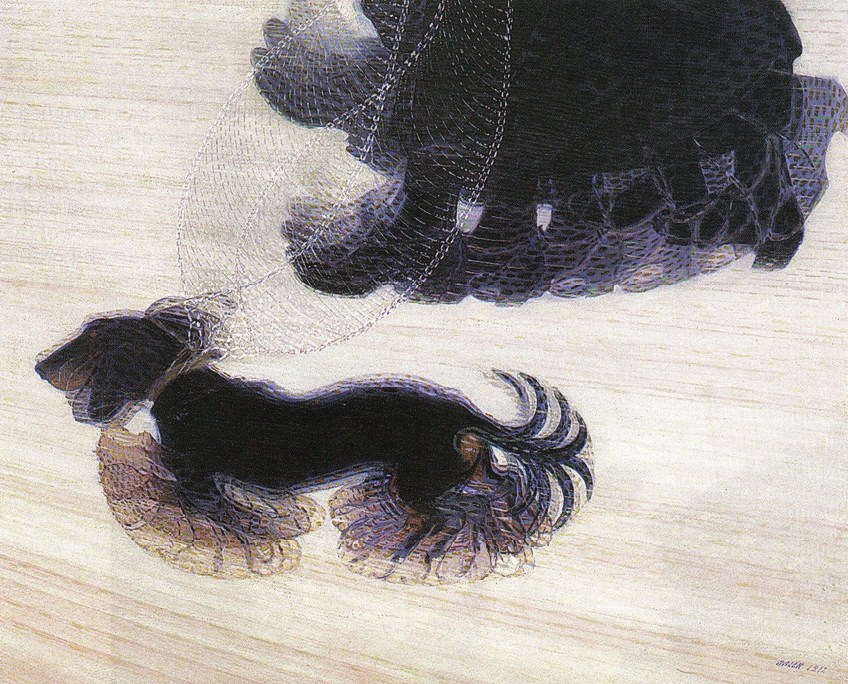
There are said to be seven elements or visual components of art. Understanding these various elements can help in both appreciating and producing art. These elements are color, space, shape, value, texture, form, and line. A line in motion denotes movement, and therefore, movement can be considered another term for line.
The sense of movement is essential to art, and with a better grasp of the element, your own works can become more dynamic, fluid, and alive.
Seven Ways to Add Visual Movement in Art
Despite paintings being static images, there are several ways in which an artist can create the feeling of movement in their works. We have outlined seven of these to make it easier for you to apply to your own artwork. These methods include using rhythm and lines, color, illusion, suggestive brushwork, scumbling, and creating implied movement through how you position your subjects.
Below, we will go into more detail about each of these methods, providing insight into how famous artists applied these techniques to make their works feel more alive and fuller of motion.
Using Rhythm to Create Visual Movement in Art
Rhythm is most directly linked with music and dancing in the arts. A pulse is reproduced over time in rhythmic patterns in music. Recurring patterns, colors, lines, and any other optical aspect creates visual rhythmic movement. These visual rhythms may be found everywhere. Rhythm is added to architecture by groups of columns and windows. The presence of book volumes on a shelf and floor tiles add rhythm to everyday activities. Something will be repeated in each of these situations.
A motif is a term used to describe a recurrent element. Artwork must have a motif in order to produce movement using rhythm.
If the spacing and size of a motif vary, the rhythm is described as irregular. An uneven beat appears to be natural. A forest’s trees have an uneven pattern. The pattern is said to be regular if its spacing and size are the same. A consistent pattern feels structured and deliberate. Street lamps along a city street maintain a consistent rhythm, each one identical to the next. A recurring pattern or theme guides the viewer through the artwork.
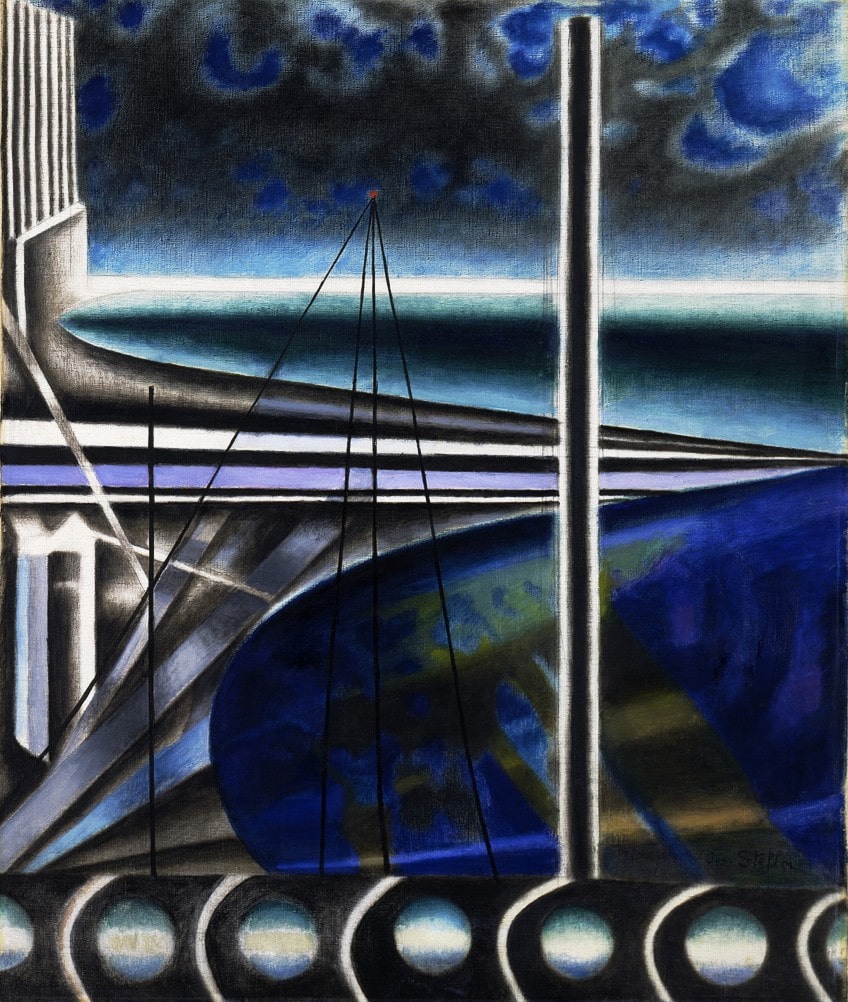
Our gaze moves from one theme instance to the next. The speed at which our attention moves throughout the composition is determined by the degree of space between instances of the theme. Futurists intended to convey speed, movement, and power. The mobility of trains, motorbikes, athletes, and other vehicles inspired the Futurists. Futurism started in 1909 and lasted into the 1920s.
Exploring the works of famous futurists such as Joseph Stella, Marcel Duchamp, and Giacomo Balla may teach us a lot about conveying movement, for example Metropolitan Port (1937) by Joseph Stella.
Using Lines to Create Movement in Art
In art, lines can be considered either fixed or dynamic. Horizontal and vertical straight lines seem substantial and stable. Most structures have horizontal and vertical edges because they give real-world solidity when they connect at angles. On the other hand, dynamic lines are considerably better at indicating movement.
Dynamic lines are frequently diagonal to the visual plane’s boundaries and might crisscross or form sweeping arcs.
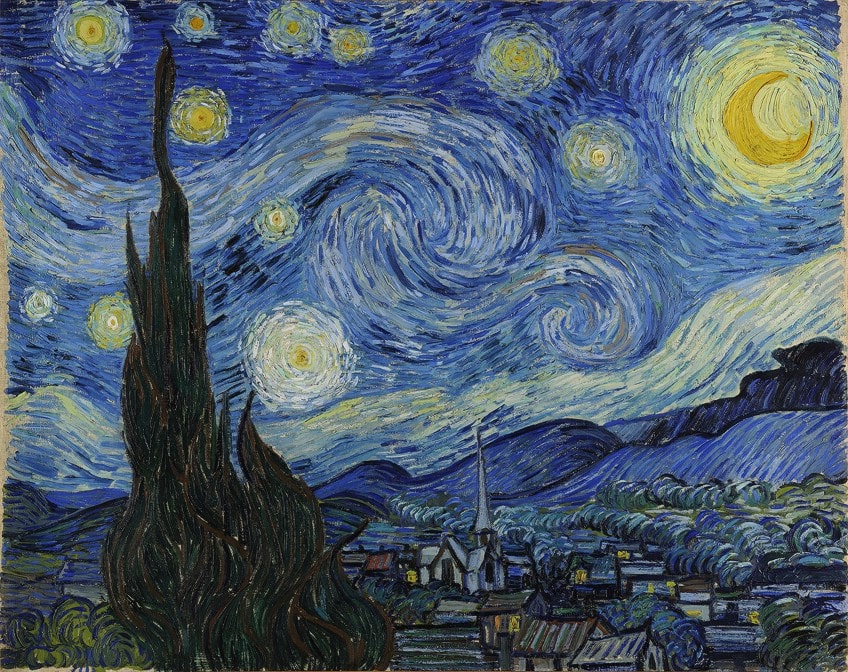
Lines can also convey movement differently. A trail is actually a drawn line – the beginning and ending points of a line show the artist’s hand movement. A line is frequently defined in art as a flowing dot. Lines are used by artists to “track” the route that something takes across a picture.
Moving lines are frequently applied in works by Vincent van Gogh, such as The Starry Night (1889).
Using Color to Create Movement
The dramatic use of color may improve the sensation of movement in the same way that fluid lines lend energy to a previously stationary work of art. Colors, like musical notes, are frequently defined as low or high key. A high key hue has a light value but a strong intensity. A low-key hue, on the other hand, is both deep and drab. These color kinds’ high contrast is brighter and livelier than an image with a narrow key range.
The hues and energetic lines work together to create a sense of movement. Broken color is a painting technique that includes using little dabs of a unique hue.
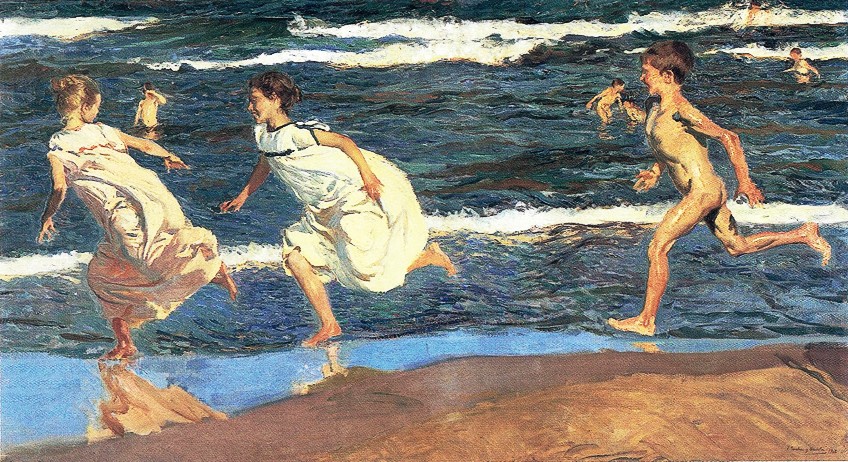
Broken color is excellent for conveying movement because your eyes desire to leap between all the various colors that are used. Following the basic flow and motion, you may also mix the fragmented colors with suggestive brushstrokes.
Joaquín Sorolla achieved just that in his pictures such as Running Along the Beach (1908). In his seascapes, Childe Hassam also made great use of broken color to convey motion.
The vivid greens and blues contrast beautifully with the bright oranges. As you move farther into the background, his brushwork straightens out and becomes more substantial, creating depth and making the foreground look jagged in comparison.
How to Create Implied Visual Movement in Art
Perhaps the simplest and most direct approach to depict movement in a piece of art is to closely observe how objects change while they are in action. For instance, how does a human alter in form when they move as opposed to when they remain still? Similarly, how does a human seem when sprinting as opposed to strolling? The artist can represent a stationary upright figure or the motion of a figure running or moving by adjusting the dynamic equilibrium and stance of a person.
For example, John Singer Sargent’s painting Spanish Dancer (1882) effectively depicts suggested movement.
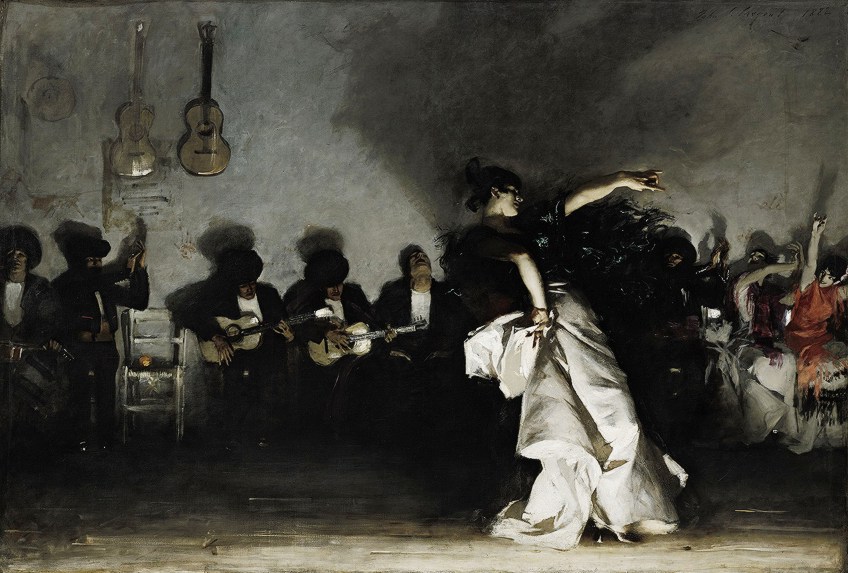
Notice how the dancer’s head is out to the side and not positioned above her feet. The relative alignment of the feet and head indicates that she is moving or off equilibrium. Gravity is pulling her to the left. She’ll have to stay up by shifting her feet or she’ll tumble. She will not collapse, obviously, since she is dancing.
The designer can also suggest motion by positioning the image in space in a manner that seems to make sense only if it is in motion.
A ball drifting, for instance, must be traveling if the backdrop features a figure in a throwing posture. Both the placement of the ball within the composition and the setting of the figure who threw the ball are sufficient to convey motion.
Using Illusion to Create Visual Movement in Art
With the advent of Op Art in the mid-20th century, a few artists pushed the notion of compositional motion to another height. Some Op Art painters used contrasts and repetition to generate motion. Op Art, which lacks a pictorial topic, takes advantage of the brain’s innate abilities to arrange complicated optical sensory information. This method might be thought of as overwhelming the perception of sight.
The sensory experience of motion in a static image engages and excites the viewer. An example of Op Art is Bridget Riley’s Movement in Squares (1961).

Using Suggestive Brushwork to Create Movement
Using suggestive brushwork that resembles general movement and motion is a simple yet powerful approach to conveying movement in your painting. The coarse and vigorous strokes of Claude Monet’s work Fishing Boats on the Coast (1884) fit the roughness of the water.
Broad strokes represent ebbs and rushes, while dense dabs of gray and white capture the essence of whitewater.

In Joaquín Sorolla’s Sea and Rocks (1900), the thundering waves on the cliffs are nearly tangible. As the water smashes and rushes between the rocks, heavy paint and powerful lines draw your focus around the artwork. Part of creating in this manner entails letting go of control and expressing intuitively.
It might be difficult to employ suggestive brushwork without first being acquainted with the motion.
Using Scumbling to Create Motion in Art
Scumbling is an art method that utilizes applying fragmented color to a canvas with a dry brush. Lighter colors are usually splotched on a dark background. The result might be an ethereal look that is ideal for painting ambient elements and movement.
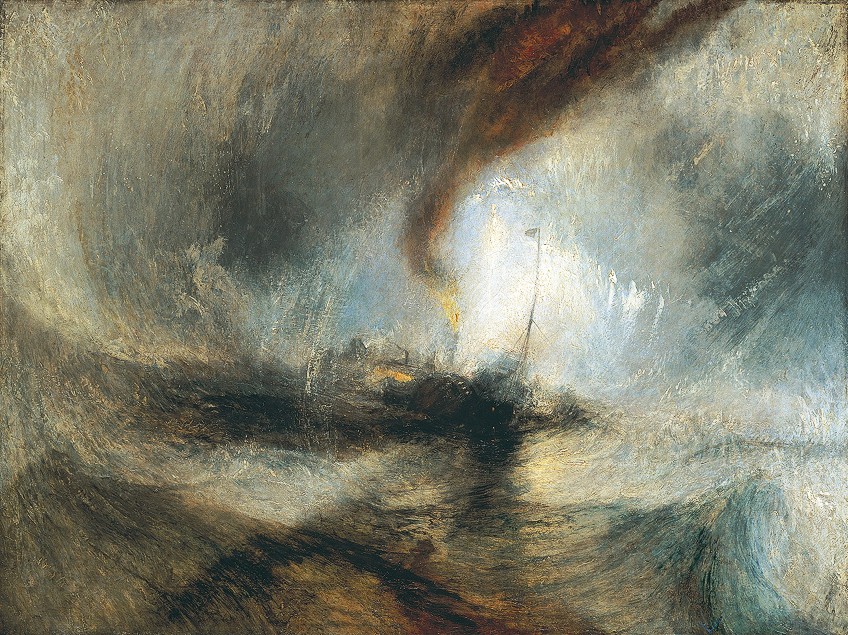
An artist who employed the technique of scumbling successfully was Joseph William Turner in his many moody artworks. His Snow Storm: Steam-Boat off a Harbour’s Mouth (1842) painting has multiple layers of grays, greens, blues, and white that are strewn on top of one another.
| Element of Art | Description |
| Rhythm | Recurring patterns, colors, lines, and any other optical aspect creates visual rhythmic movement |
| Lines | Lines are used by artists to track the route that something takes across a picture |
| Color | It is excellent for conveying movement because your eyes desire to leap between all the various colors |
| Subject Posing | The artist can represent a stationary upright figure or the motion of a figure running or moving by adjusting the dynamic equilibrium and stance of a person |
| Illusion | The sensory experience of motion in a static image engages and excites the viewer |
| Brushwork | Part of creating in this manner entails letting go of control and expressing intuitively |
| Scumbling | Scumbling is an art method that utilizes applying fragmented color to a canvas with a dry brush. |
As one of the most important principles of art, movement can be seen as an essential aspect of an artwork that attempts to depict a sense of flow, motion, and fluidity. Examples of movement in art have shown how by utilizing various techniques, one can bring an artwork to life and make it move and breathe. Even though an artwork cannot physically move, an artist can use various techniques to make it seem like it is moving.
Frequently Asked Questions
What Is Movement in Art?
Optical rhythm can be created by repeating any visual aspect, such as patterns, colors, or lines. The patterns in an artwork help to create movement through rhythm. Movement gives intrigue to a piece in addition to excitement and suspense. When an artist organizes the parts of a picture in a specific way, an audience’s eyes can be led to move around the artwork. Movement in relation to art is defined by a variety of variables, including line, color, space, and balance.
What Is the Movement in Art Definition?
The audience’s attention can be shifted from the main focal point to other aspects of the composition by employing movement techniques. For instance, the eye will automatically follow the course of a continuous line, from larger to simple components, darker to light parts, organic forms to geometric shapes, and so on. Line, rhythm, color, proportion, and space all contribute to the illusion of movement.
Jordan Anthony is a Cape Town-based film photographer, curator, and arts writer. She holds a Bachelor of Art in Fine Arts from the University of the Witwatersrand, Johannesburg, where she explored themes like healing, identity, dreams, and intuitive creation in her Contemporary art practice. Jordan has collaborated with various local art institutions, including the KZNSA Gallery in Durban, the Turbine Art Fair, and the Wits Art Museum. Her photography focuses on abstract color manipulations, portraiture, candid shots, and urban landscapes. She’s intrigued by philosophy, memory, and esotericism, drawing inspiration from Surrealism, Fluxus, and ancient civilizations, as well as childhood influences and found objects. Jordan is working for artfilemagazine since 2022 and writes blog posts about art history and photography.
Learn more about Jordan Anthony and about us.
Cite this Article
Jordan, Anthony, “Movement in Art – Discover Instances of Visual Movement in Art.” artfilemagazine – Your Online Art Source. August 23, 2022. URL: https://artfilemagazine.com/movement-in-art/
Anthony, J. (2022, 23 August). Movement in Art – Discover Instances of Visual Movement in Art. artfilemagazine – Your Online Art Source. https://artfilemagazine.com/movement-in-art/
Anthony, Jordan. “Movement in Art – Discover Instances of Visual Movement in Art.” artfilemagazine – Your Online Art Source, August 23, 2022. https://artfilemagazine.com/movement-in-art/.


